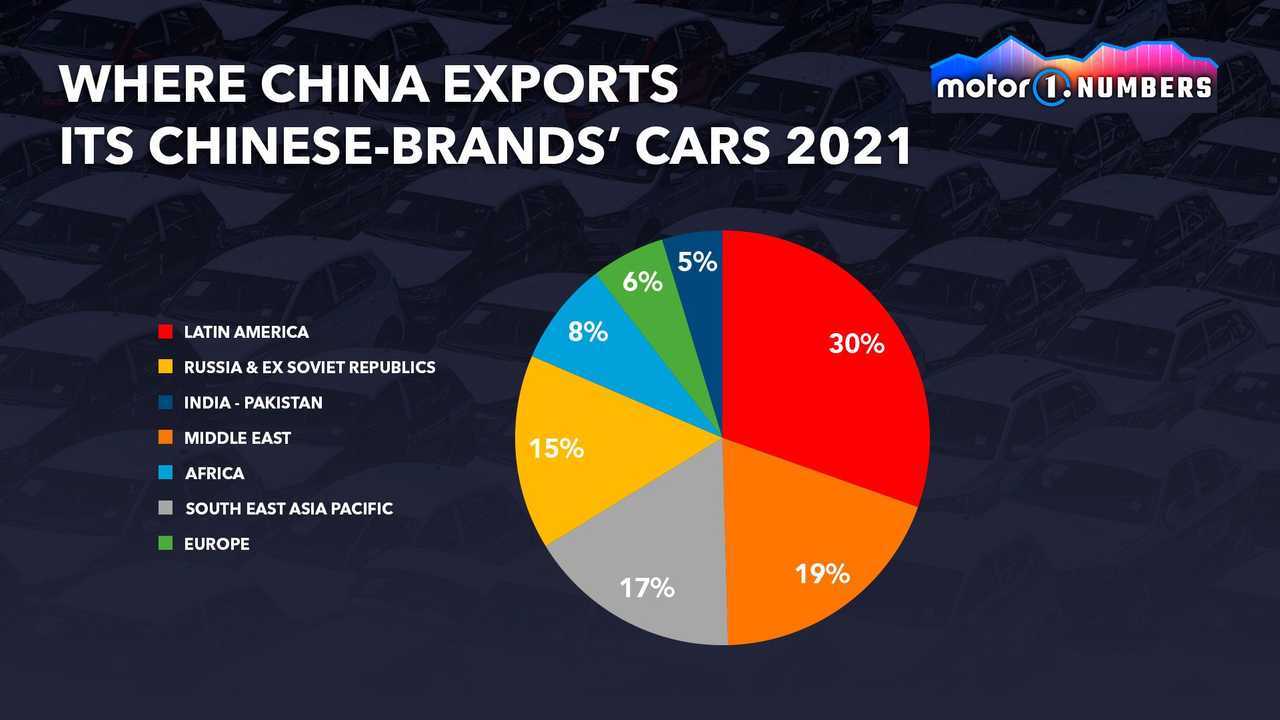More Than BMW And Porsche: Understanding The Broader Challenges In The Chinese Auto Market

Table of Contents
Intense Domestic Competition
The rise of powerful domestic automakers like BYD, Nio, and Xpeng is drastically reshaping the competition in the Chinese auto market. These Chinese car brands are not just competing; they are rapidly innovating, offering competitive pricing, and leveraging strong domestic brand loyalty to capture significant market share. This intense competition necessitates a sophisticated understanding of the competitive landscape for any foreign entrant hoping to succeed.
- Aggressive pricing strategies from domestic brands: Chinese manufacturers are often able to undercut foreign competitors on price, leveraging lower manufacturing costs and economies of scale.
- Rapid advancements in electric vehicle (EV) technology by Chinese manufacturers: China is a global leader in EV technology, with domestic brands pushing the boundaries of battery technology, range, and charging infrastructure.
- Growing consumer preference for domestically-produced vehicles: National pride and a growing sense of confidence in domestic brands are driving increased preference for Chinese cars.
- Increased government support for domestic auto brands: The Chinese government actively promotes the growth of its domestic auto industry through subsidies, tax breaks, and other incentives.
Shifting Consumer Preferences
Chinese car buyers are increasingly sophisticated and their preferences are constantly evolving. Understanding these automotive market trends in China is paramount for foreign brands aiming to maintain a competitive edge in the Chinese car market. This goes beyond simply offering a reliable vehicle; it requires a deep understanding of the desires and aspirations of the modern Chinese consumer.
- Growing demand for electric vehicles (EVs) and hybrid vehicles: Environmental concerns and government incentives are fueling the rapid adoption of EVs and hybrids in China.
- Increased preference for SUVs and crossovers: SUVs and crossovers continue to dominate sales in the Chinese auto market, reflecting a shift towards larger and more versatile vehicles.
- Focus on technological features like advanced driver-assistance systems (ADAS): Chinese consumers highly value technological advancements, and ADAS features are increasingly becoming must-have options.
- Emphasis on brand image and social status: The car remains a significant status symbol in China, and brand image plays a crucial role in purchasing decisions.
Regulatory Hurdles and Infrastructure
Navigating China's complex regulatory environment is a significant challenge for any player in the automotive market China. This includes everything from emission standards and safety regulations to localization requirements. Furthermore, the lack of a fully developed charging infrastructure for EVs presents a significant hurdle to the widespread adoption of electric vehicles. These government policies in China's auto sector must be carefully considered.
- Strict emission standards and environmental regulations: China is increasingly stringent in its environmental regulations, requiring automakers to meet increasingly ambitious emission targets.
- Complex import tariffs and localization requirements: High import tariffs and localization requirements increase the cost and complexity of importing and selling foreign vehicles in China.
- Varying regulations across different provinces and cities: Navigating the diverse regulatory landscape across different regions of China adds another layer of complexity for automakers.
- Need for robust charging infrastructure for widespread EV adoption: The lack of widespread charging infrastructure is a major impediment to the mass adoption of electric vehicles in China.
Supply Chain Disruptions and Economic Factors
The globalized nature of the automotive industry means that the Chinese auto market is significantly impacted by global events. Supply chain disruptions, semiconductor shortages, and macroeconomic fluctuations all impact the stability and predictability of the Chinese auto market, impacting everything from production to sales. Companies must anticipate and mitigate these risks proactively.
- Impact of global chip shortages on production: Global semiconductor shortages have significantly disrupted automotive production globally, including in China.
- Fluctuations in raw material prices: Fluctuations in the price of raw materials, such as steel and aluminum, can impact manufacturing costs and profitability.
- Economic slowdown and its influence on consumer spending: Economic slowdowns can significantly reduce consumer spending, impacting demand for vehicles.
- Geopolitical risks affecting international trade: Geopolitical instability and trade tensions can disrupt supply chains and impact market access.
Conclusion
The Chinese auto market is a dynamic and multifaceted arena. While the allure of a massive consumer base remains undeniable, success hinges on a deep understanding of and adaptation to the intense domestic competition, evolving consumer preferences, regulatory hurdles, and macroeconomic factors. Foreign brands must develop robust strategies to navigate these challenges effectively to compete in this challenging but potentially very rewarding market. To thrive in this competitive landscape, businesses must develop a deep understanding of the complexities of the Chinese auto market. Conduct thorough market research, adapt to evolving consumer demands, and build resilient supply chain strategies. Don't let the success of BMW and Porsche overshadow the broader, more significant challenges that await. Learn more about the Chinese car market today and secure your position in this rapidly evolving industry.

Featured Posts
-
 Bayern Legends Last Dance Thomas Muellers Emotional Farewell Match
May 11, 2025
Bayern Legends Last Dance Thomas Muellers Emotional Farewell Match
May 11, 2025 -
 Mtv Cribs A Look Inside The Homes Of Wealthy Celebrities
May 11, 2025
Mtv Cribs A Look Inside The Homes Of Wealthy Celebrities
May 11, 2025 -
 Thomas Muellers Xi Unveiling His Most Frequent Bayern Munich Teammates
May 11, 2025
Thomas Muellers Xi Unveiling His Most Frequent Bayern Munich Teammates
May 11, 2025 -
 Eric Antoine Une Ancienne Miss Meteo A Ses Cotes Lors De La Premiere
May 11, 2025
Eric Antoine Une Ancienne Miss Meteo A Ses Cotes Lors De La Premiere
May 11, 2025 -
 Astros Foundation College Classic Names 2025 All Tournament Team Members
May 11, 2025
Astros Foundation College Classic Names 2025 All Tournament Team Members
May 11, 2025
